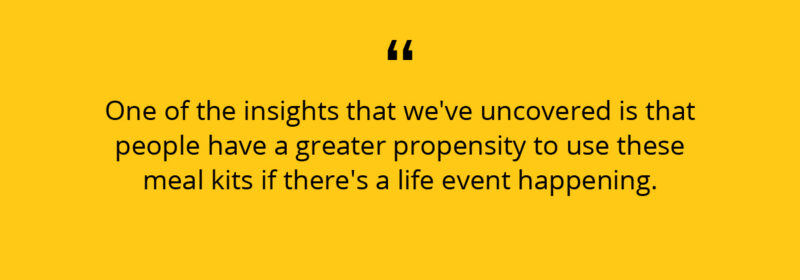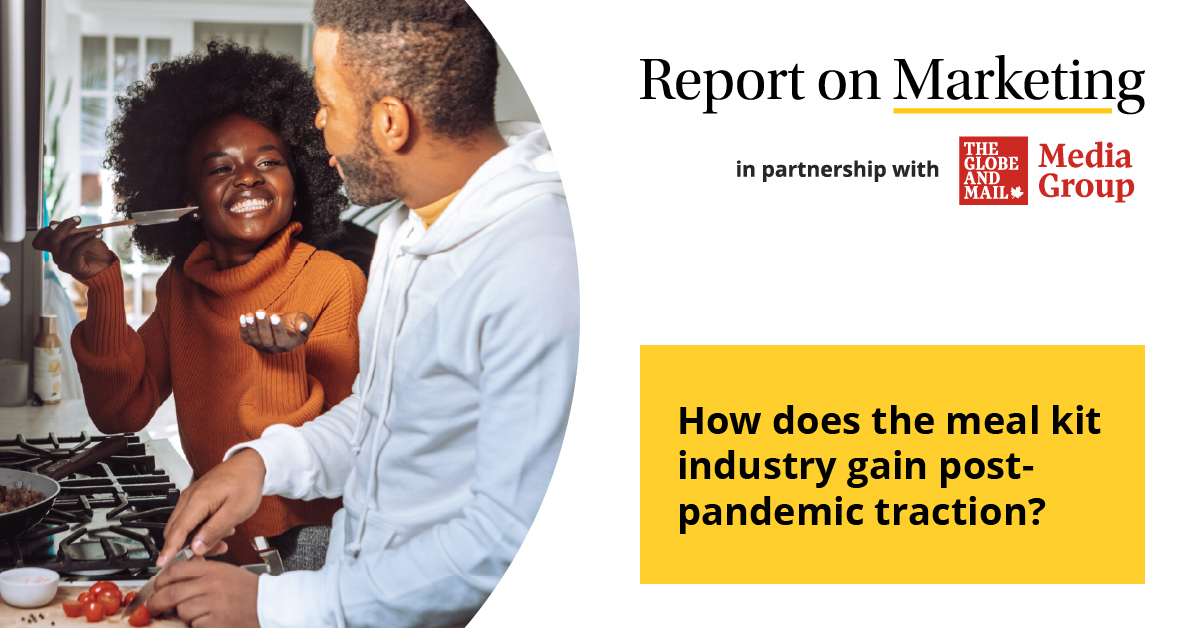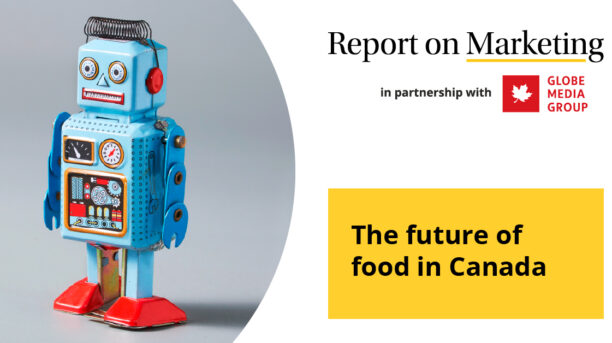By Mo Dezyanian, President, Empathy Inc.
The pandemic affected many product categories but few as profoundly as meal kits. Their adoption rose rapidly in the wake of Covid as people looked for new and constructive ways to spend their time at home.
At the start of the pandemic, we saw a rush to order meal kits, which is demonstrated clearly in the success of the businesses supplying them. For instance, Hello Fresh posted a €369 million global profit in 2020, after a loss of €10 million the previous year.
The reasons why were really simple. We had fewer options at meal times, restaurants were closing, and people weren’t going out as much. Many customers also had more disposable income. The spike in meal kit adoption almost doubled to reach 17% of the Canadian population, 5.3 million people, according to research from Vividata.
An industry nearly doubling in size in a year is extremely rare. But, as we’re gradually coming out of the pandemic, how do meal kit providers work to connect further with audiences and uncover real, new opportunities? And what does the sector need to think about to maintain and build its traction?
Beyond demographics
Demographic research provides some good insights into where the growth in meal kits has come from. Students looking for fresh and convenient meal options, for instance, and higher income households. But, while factors such as age and occupation are great indicators, there’s a chance here to dig deeper.
At Empathy we worked with Vividata on a new research project, “Cooking By The Numbers”, which focuses on what the meal kit sector can do to make the most of the opportunity in Canada as the economy recovers and consumer confidence rises.

One of the insights that we’ve uncovered is that people have a greater propensity to use these meal kits if there’s a life event happening. People who have just bought a new property, experienced the death of a loved one, are recently married, or have a new baby, are especially attracted to the idea of meal kits. For instance, 20% of people who just bought their first home are more likely to use them, says the Vividata research.
Looking through this data shows quickly that the success of the category is not solely related to the pandemic. This gives us a chance to connect with people’s aspirations because the data shows many Canadians view meal kits as a small luxury, a treat that also says they’ve made it in life. Some are thinking, “I’m hiring a personal chef, but without the expense, and that makes me feel a bit better.”
A little luxury
The analogy is the Starbucks Latte. It makes us feel good, and it’s luxurious. But, at the same time, it’s accessible. That’s relevant because research shows that perceptions of meal kits are shifting from them being a convenience product to a semi-luxury that people purchase to feel good.
So, what does this mean for brands in the sector? Traditionally, many have hooked people in on convenience, and the meal itself. And, of course, that remains important. But while that’s why many go in and make the initial purchase, it’s not always the reason they stay.
The big story throughout the pandemic is that certain products and categories will emerge differently. Some behaviours will stick, others will not. And one of the most fascinating things I’ve seen is that many products are moving towards the luxury, or at least “treat” category almost inadvertently through the perception of their consumers.
This shift has implications for both media targeting and the promotion of meal kits. In terms of media activity, we’re seeing the category skew towards younger, more diverse, audiences with heavy mobile and digital media usage. And, when it comes to coupons and bargains, there’s a risk that they cheapen the product. That’s because adopters of meal kits value the status that comes with them.

Stronger customer relationships
There are clear ways to position meal kits in the luxury space. One of them involves charging a premium, while encouraging people to sign-up for meals backed by a celebrity, a chef with a voice in the market, to provide authority that contrasts with looking up a recipe online and being faced with wildly inconsistent results.
That’s an approach worth considering because positioning the product in the luxury space puts the focus on potential customers looking for relationships, who are less budget conscious, and not as attracted to coupons that erode the margin of the business.
Ultimately, greater investment in looking beyond straightforward demographics towards segmentation, targeting and clear messaging will deliver growth for meal kit brands beyond the pandemic.
Empathy Inc. is a member of the Institute of Canadian Agencies. Report on Marketing is where leading Canadian agencies showcase their insights, cutting-edge research and client successes. The Report on Marketing provides a valuable source of thought leadership for Canadian marketers to draw inspiration from. Find more articles like this at the Report on Marketing.




